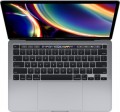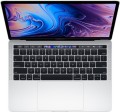Brightness
The maximum brightness that a laptop screen can provide.
The brighter the ambient light, the brighter the laptop screen should be, otherwise the image on it may be difficult to read. And vice versa: in dim ambient light, high brightness is unnecessary — it greatly burdens the eyes (however, in this case, modern laptops provide brightness control). Thus, the higher this indicator, the more versatile the screen is, the wider the range of conditions in which it can be effectively used. The downside of these benefits is an increase in price and energy consumption.
As for specific values, many modern laptops have a brightness of
250 – 300 nt and even
lower. This is quite enough for working under artificial lighting of medium intensity, but in bright natural light, visibility may already be a problem. For use in sunny weather (especially outdoors), it is desirable to have a brightness margin of at least
300 – 350 nt. And in the most advanced models, this parameter can be
350 – 400 nt and even
more.
Contrast
The contrast of the screen installed in the laptop.
Contrast is the largest difference in brightness between the lightest white and darkest black that can be achieved on a single screen. It is written as a fraction, for example, 560:1; while the larger the first number, the higher the contrast, the more advanced the screen is and the better the image quality can be achieved on it. This is especially noticeable with large differences in brightness within a single frame: with low contrast, individual details located in the darkest or brightest parts of the picture may be lost, increasing the contrast allows you to eliminate this phenomenon to a certain extent. The flip side of these benefits is an increase in cost.
Separately, we emphasize that in this case only static contrast is indicated — the difference provided within one frame in normal operation, at constant brightness and without the use of special technologies. For advertising purposes, some manufacturers may also provide data on the so-called dynamic contrast — it can be measured in very impressive numbers (seven-digit or more). However, you should focus primarily on static contrast — this is the basic characteristic of any display.
As for specific values, even in the most advanced screens, this indicator does not exceed 2000: 1. But in general, modern laptops have a rather low contrast ratio — it is assumed that for tasks that require more advanced image characteristics, it is more...reasonable to use an external screen (monitor or TV).
Model
The specific model of the processor installed in the laptop, or rather, the processor index within its series (see above). Knowing the full name of the processor (series and model), you can find detailed information on it (up to practical reviews) and clarify its capabilities.
CPU speed
The clock speed of the processor installed in the laptop (for multi-core processors, the frequency of each individual core).
Theoretically, a higher clock speed has a positive effect on performance, as it allows the processor to perform more operations per unit of time. However, in fact, the capabilities of the CPU depend on a number of other characteristics — primarily on the series to which it belongs (see above). It even happens that of the two chips, the more performant in the overall result is the slower one. With this in mind, it makes sense to compare by clock frequency only processors of the same series, and ideally, also of the same generation; and the laptop as a whole should be judged by the complex characteristics of the system, as well as by the results of tests (see below).
TurboBoost / TurboCore frequency
Processor clock speed achieved in TurboBoost or TurboCore "overclocking" mode.
Turbo Boost and Turbo Core technologies are used by different manufacturers (Intel and AMD, respectively), but they have the same principle of operation: load distribution from more loaded processor cores to less loaded ones to improve performance. The "overclocking" mode is characterized by an increased clock frequency, and it is indicated in this case.
For more information about clock speed in general, see the relevant paragraph above.
Passmark CPU Mark
The result shown by the laptop processor in the Passmark CPU Mark test.
Passmark CPU Mark is a comprehensive test that is more detailed and reliable than the popular 3DMark06 (see above). It checks not only the gaming capabilities of the CPU, but also its performance in other modes, based on which it displays the overall score; this score can be used to fairly reliably evaluate the processor as a whole (the more points, the higher the performance).
Graphics card model
GeForce graphics cards from NVIDIA:
RTX represented by
RTX 2060,
RTX 2060 Max-Q,
RTX 2070,
RTX 2070 Max-Q,
RTX 2070 Super, RTX
2070 Super Max-Q,
RTX 2080,
RTX 2080 Max-Q,
RTX 2080 Super,
RTX 2080 Super Max-Q,
RTX 3050,
RTX 3050 Ti,
RTX 3060,
RTX 3060 Max-Q,
RTX 3070,
RTX 3070 Max-Q, RTX 3070 Ti, RTX 3080,
RTX 3080 Ti,
RTX 4050,
RTX 4060,
R TX 4070,
RTX 4080,
RTX 4090,
RTX 5070,
RTX 5070 Ti,
RTX 5080,
RTX 5090;
MX1xx represented by MX110, MX130 and MX150,
MX2xx(MX230 and MX250),
MX3xx(MX330 and MX350),
MX450, GTX which represent GTX 1050,
GTX 1060,
GTX 1060 Max-Q,
GTX 1070,
GTX 1070 Max-Q,
GTX 1080,
GTX 1080 Max-Q,
GTX 1650,
GTX 1650 Max-Q,
GTX 1650 Ti,
GTX 1660 Ti,
GTX 1660 Ti Max-Q and. AMD also offers video cards
Radeon 520,
Radeon 530(535),
Radeon 540X,
Radeon 610(625, 630),
Radeon RX 550 (550X, 560),
Radeon RX 640,
Radeon RX 5500M,
Radeon RX 6800M and
Radeon Pro.
Note that all the above models are discrete. Actually, for a configuration with discrete graphics, it is the model of a separate video adapter that is indicated; if it is supplemented by an integrated module, the name of this module can be clarified by the official characteristics of the processor.
It is also worth mentioning that this paragraph does not give the full name of the model, but only its name within the series (the series itself is given separately - see above). However, knowing the series and model, one can easily find detailed information about the graphics card.
USB C 3.2 gen2
The number of
USB C 3.2 gen2 ports provided in the laptop (previously, such connectors were labeled USB C 3.1 gen2 and USB C 3.1).
USB C is universal connector created relatively recently and designed for use in desktop and laptop computers. It is slightly larger than microUSB, has convenient double-sided design (no matter which side the plug is connected to), and also allows for increased power supply and number of special functions. In addition, the same connector is standardly used in the Thunderbolt v3 interface, and technically can be used for other interfaces; so in some laptops USB C has combined purpose - see “Alternate Mode” for more details. And in some laptops (mostly the most compact ones), USB C can also charge the device’s own battery.
Specifically, the USB C 3.2 gen2 version allows for connection speeds of up to 10 Gbps. As for the number of such ports, it is most often small - usually 1 - 2. This is due to the fact that significantly fewer peripherals for USB C are produced than for full-size USB. However, in some configurations the number of connectors of this type can reach 4.
Thunderbolt interface
The number of
Thunderbolt connectors, as well as their version (
Thunderbolt v3,
Thunderbolt v4,
Thunderbolt v5
Thunderbolt is a universal high-speed interface primarily known from Apple laptops, but used by other manufacturers as well. Such a connection actually combines several interfaces — at least PCI-E for peripherals and DisplayPort for outputting video (and audio) to external screens, and others in recent versions. Thanks to this, Thunderbolt can be used both as a peripheral connector and as a video output. Even greater versatility of this interface is provided by the daisy chain function — serial connection of several devices (up to 6) to one port; moreover, it can be both monitors and other peripherals, and in Apple technology, other “apple” computers. Thus, a small number of connectors can be compensated by serial connection.
— Thunderbolt 3. Version introduced in 2015. In this generation, developers abandoned the DisplayPort connector in favor of the more versatile USB-C. Thus, the Thunderbolt v3 connection in laptops is often implemented not as a separate connector, but as a special mode of operation of the regular USB-C port (see "Alternate Mode"). And outputs and devices for USB4 (see above) can be initially made compatible with this interface as well (although this is no...t strictly required). Also optional, but a very common feature is Power Delivery support, which allows you to supply connected devices with power up to 100 watts over the same cable. Data transfer rates can reach up to 40 Gbps, but keep in mind that if the wire length is more than 0.5 m, a special active cable may be required to maintain this speed. However, conventional passive USB-C cables are also suitable for working with Thunderbolt v3 — except that the speed may be noticeably lower than the maximum possible (albeit above 20 Gbps, which runs USB 3.2 gen2).
Thunderbolt v4. The latest (at the end of 2020) version of this interface, presented in the summer of the same year. It also uses a USB-C connector. Formally, the maximum throughput remains the same as its predecessor — 40 Gbps; however, a number of improvements have significantly increased the actual connectivity. Thus, Thunderbolt v4 allows you to broadcast a signal simultaneously to two 4K monitors (at least) and provides a data transfer rate according to the PCI-E standard of at least 32 Gbps (against 16 Gbps in the previous version). In addition, this interface is mutually compatible with USB4 by default, and the daisy chain function is supplemented by the ability to connect hubs with up to 4 Thunderbolt v4 ports. Other features include protection against DMA (direct memory access) attacks.
— Thunderbolt v5. In the fifth edition, Thunderbolt continues to rely on the USB C connector. In the default configuration, it provides bidirectional throughput of up to 80 Gbps, and Bandwidth Boost technology allows for speeds up to 120 Gbps. Thunderbolt v5 supports multiple 8K monitors, three 4K monitors with 144Hz refresh rate, or one external display with the fastest refresh rate of 540Hz. In addition, PCIe Gen 4 support ensures sufficient bandwidth for external graphics cards (up to 64 Gbps), which opens up new possibilities for using AI and machine learning. Through the Thunderbolt v5 interface, charging power of up to 240 W is transmitted using USB Power Delivery 3.1 technology - the most powerful and energy-hungry laptops can be safely charged via the USB port.
